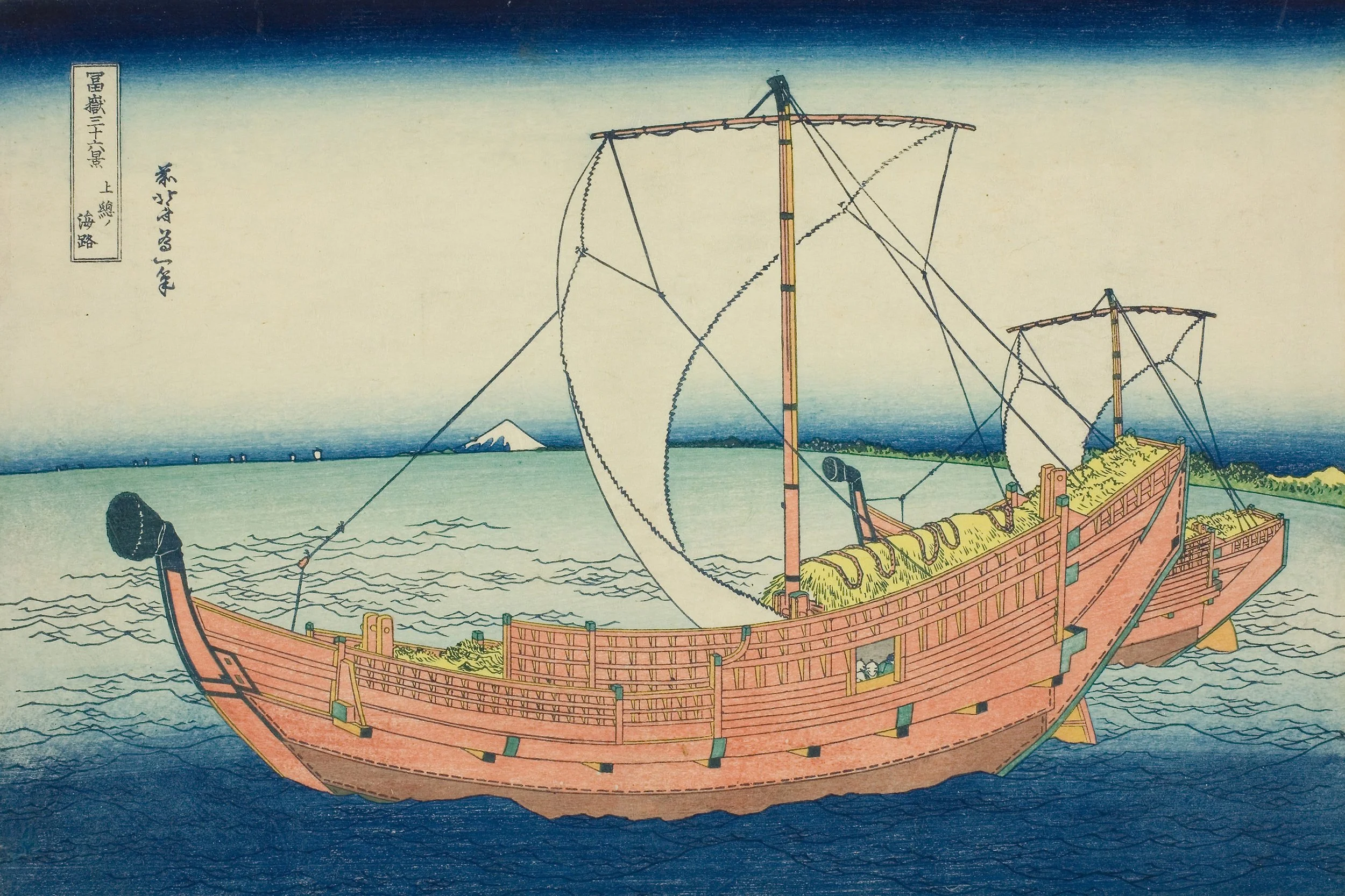21.Shimomeguro 下目黒
Shimomeguro
The area is still known today as Shimomeguro.
At the time, it was also known as a falconry ground of the Tokugawa shogunate.
Although it was tenryō—directly controlled land of the shogunate—
farmers lived there, and shrines and temples were scattered throughout.
To let land used only a few times a year
sit idle for free—
would be wasteful.
Within the composition, a conversation is depicted
between a falconer and a farmer.
On the day of a falcon hunt, falconers would serve the shogun,
and farmers would act as local guides.
But this scene does not portray that day.
Here, the falconer is likely conducting a prior survey,
asking the farmer about where game tends to appear.
By depicting just this conversation,
the social context of the time vividly comes to life.
As usual, Mount Fuji appears in the standard composition:
a convex Fuji placed at the lowest point of a concave structure.
In Shimomeguro, the foreground’s concave section
takes up half the picture.
The conversation between the falconer and the kneeling farmer—
to depict the life of Meguro’s farmers,
this scale is necessary.
Hokusai does not depict the grandeur of the shogun’s falcon hunt.
Instead, he illustrates the calm, rural scene
of a conversation between a falconer and a farmer beforehand.
A gentle gaze from Hokusai is evident.
By drawing both the falconer and the farmer,
the historical setting of the time is expanded.
It is a painting like a haiku.
Hokusai’s aesthetic sensibility resides here.
11
22.The Kazusa Sea Route 上総ノ海路
Kazusa no Kaiji (Sea Route off Kazusa)
The location is Kisarazu in Chiba Prefecture.
Depicted here is a benzaisen—
a large domestic cargo ship.
Among the ships in the Thirty-Six Views of Mount Fuji,
this is the largest.
Lined up from smallest to largest:
Takasebune (rowboat): Under Mannenbashi Bridge at Fukagawa, Nihonbashi in Edo
Chimawari-bune (local rowboat): Tsukudajima in Musashi Province
Oshiosen (rowboat with cargo): Off Kanagawa, Tagonoura in Ejiri on the Tōkaidō
Kamigata-sen (sailing ship): Ushibori in Hitachi Province
Benzaisen (large sailing cargo ship): Kazusa no Kaiji
In this way, Hokusai depicted a wide variety of ships—
perhaps in praise of the curved beauty inherent in boats.
The arcs created by the ships
form a counterpart to the arc of the horizon.
For that reason, the curve of the horizon is more pronounced than in Tsukudajima in Musashi.
Since Mount Fuji sits upon that horizon line, it becomes a convex form atop another convex form.
It works because the concave curve created by the ship indirectly supports the composition.
Together with the curve of the sail,
this composition is built almost entirely from geometric curves.
The only organic lines are the waves—
and even those are drawn quite modestly.
Therefore, the star of the composition is the curve.
Everything else is a supporting element.
As always, Hokusai makes this contrast clear.
It’s a technique to make what he wants to show stand out.
Hokusai’s aesthetic sensibility resides here.

